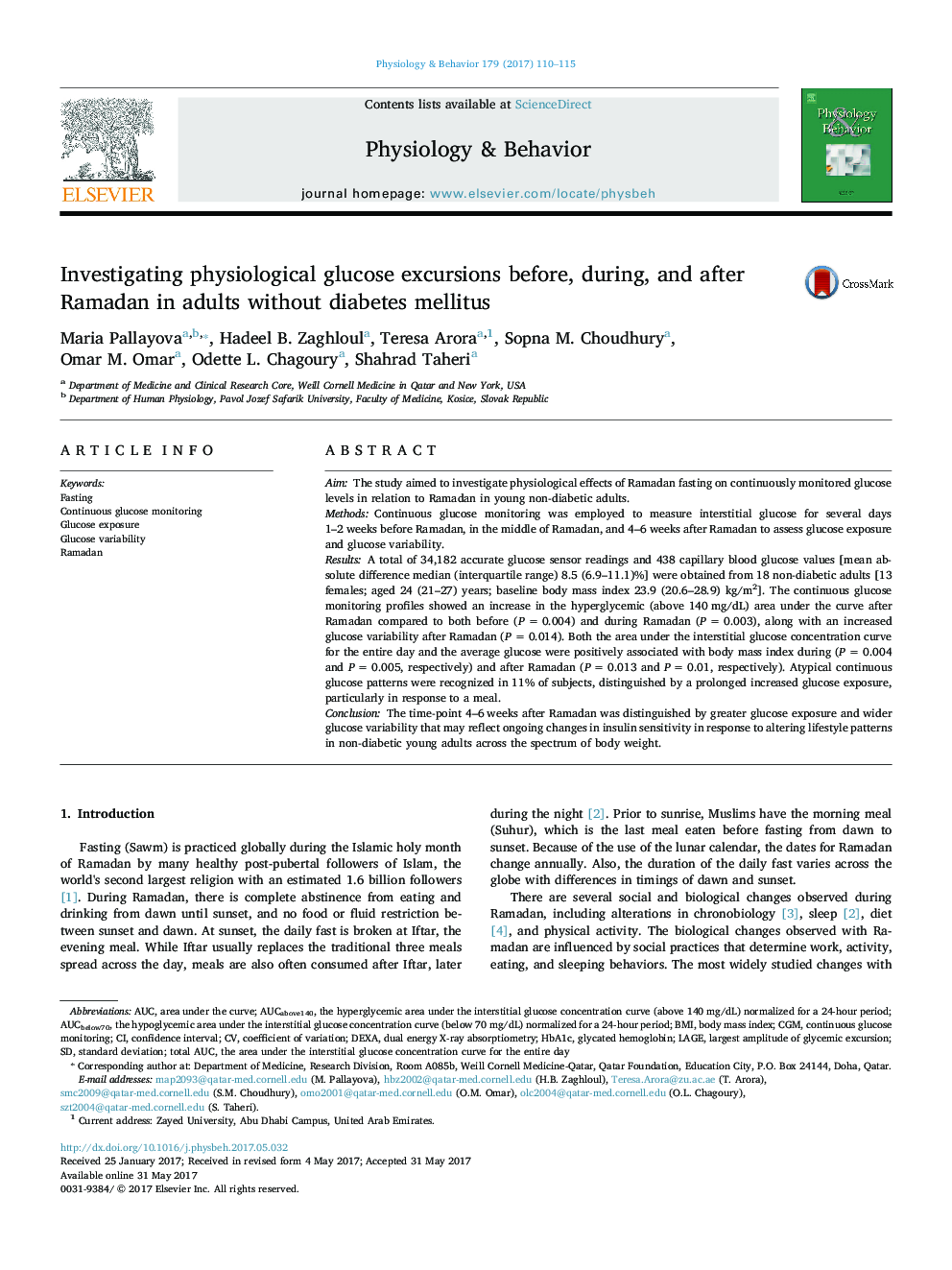| کد مقاله | کد نشریه | سال انتشار | مقاله انگلیسی | نسخه تمام متن |
|---|---|---|---|---|
| 5593631 | 1571140 | 2017 | 6 صفحه PDF | دانلود رایگان |
- Glucose exposure and variability increased after Ramadan in non-diabetic adults.
- Physiological glucose response to dietary patterns was not clinically relevant.
- Atypical continuous glucose patterns were found in 2 (11%) of non-diabetic adults.
- Deep insights from continuous glucose monitoring can help detect prediabetes early.
AimThe study aimed to investigate physiological effects of Ramadan fasting on continuously monitored glucose levels in relation to Ramadan in young non-diabetic adults.MethodsContinuous glucose monitoring was employed to measure interstitial glucose for several days 1-2Â weeks before Ramadan, in the middle of Ramadan, and 4-6Â weeks after Ramadan to assess glucose exposure and glucose variability.ResultsA total of 34,182 accurate glucose sensor readings and 438 capillary blood glucose values [mean absolute difference median (interquartile range) 8.5 (6.9-11.1)%] were obtained from 18 non-diabetic adults [13 females; aged 24 (21-27) years; baseline body mass index 23.9 (20.6-28.9) kg/m2]. The continuous glucose monitoring profiles showed an increase in the hyperglycemic (above 140Â mg/dL) area under the curve after Ramadan compared to both before (PÂ =Â 0.004) and during Ramadan (PÂ =Â 0.003), along with an increased glucose variability after Ramadan (PÂ =Â 0.014). Both the area under the interstitial glucose concentration curve for the entire day and the average glucose were positively associated with body mass index during (PÂ =Â 0.004 and PÂ =Â 0.005, respectively) and after Ramadan (PÂ =Â 0.013 and PÂ =Â 0.01, respectively). Atypical continuous glucose patterns were recognized in 11% of subjects, distinguished by a prolonged increased glucose exposure, particularly in response to a meal.ConclusionThe time-point 4-6Â weeks after Ramadan was distinguished by greater glucose exposure and wider glucose variability that may reflect ongoing changes in insulin sensitivity in response to altering lifestyle patterns in non-diabetic young adults across the spectrum of body weight.
Journal: Physiology & Behavior - Volume 179, 1 October 2017, Pages 110-115
